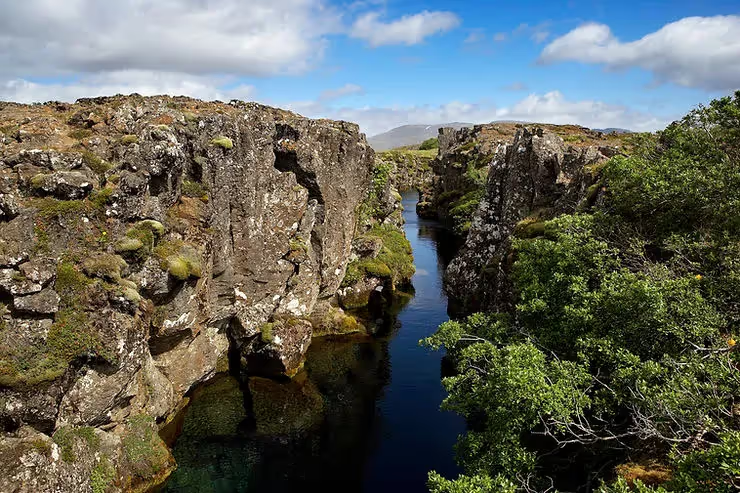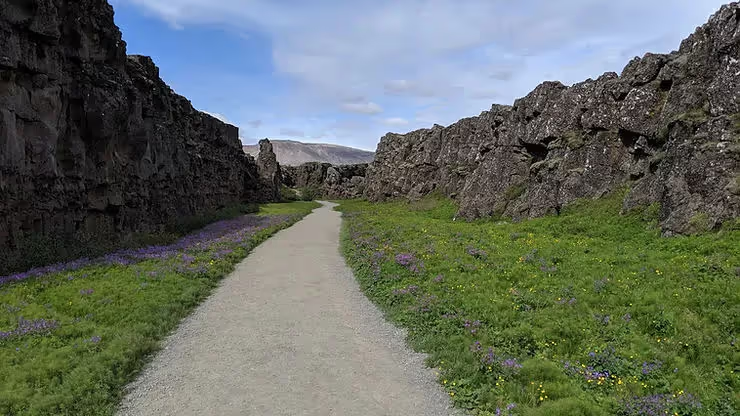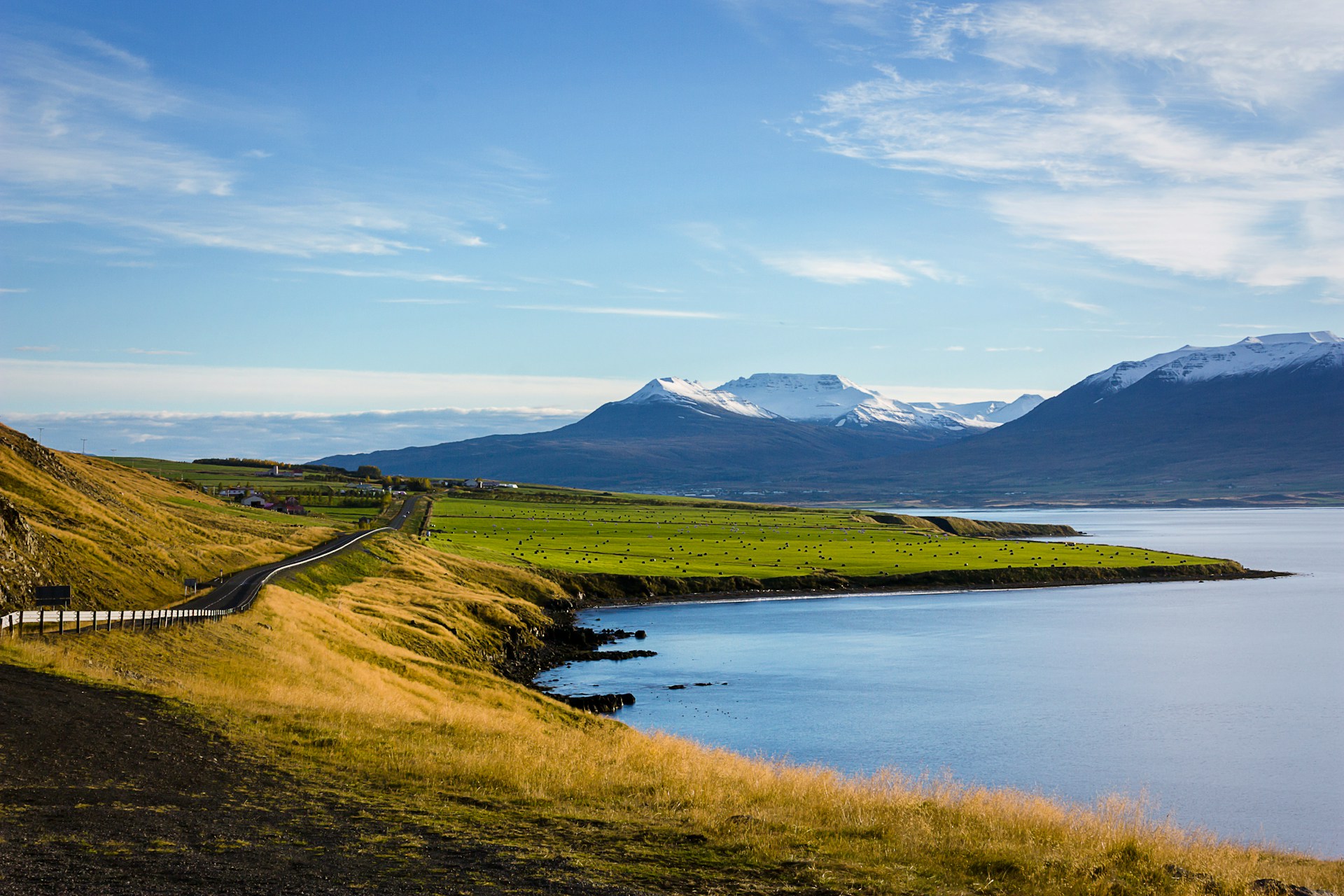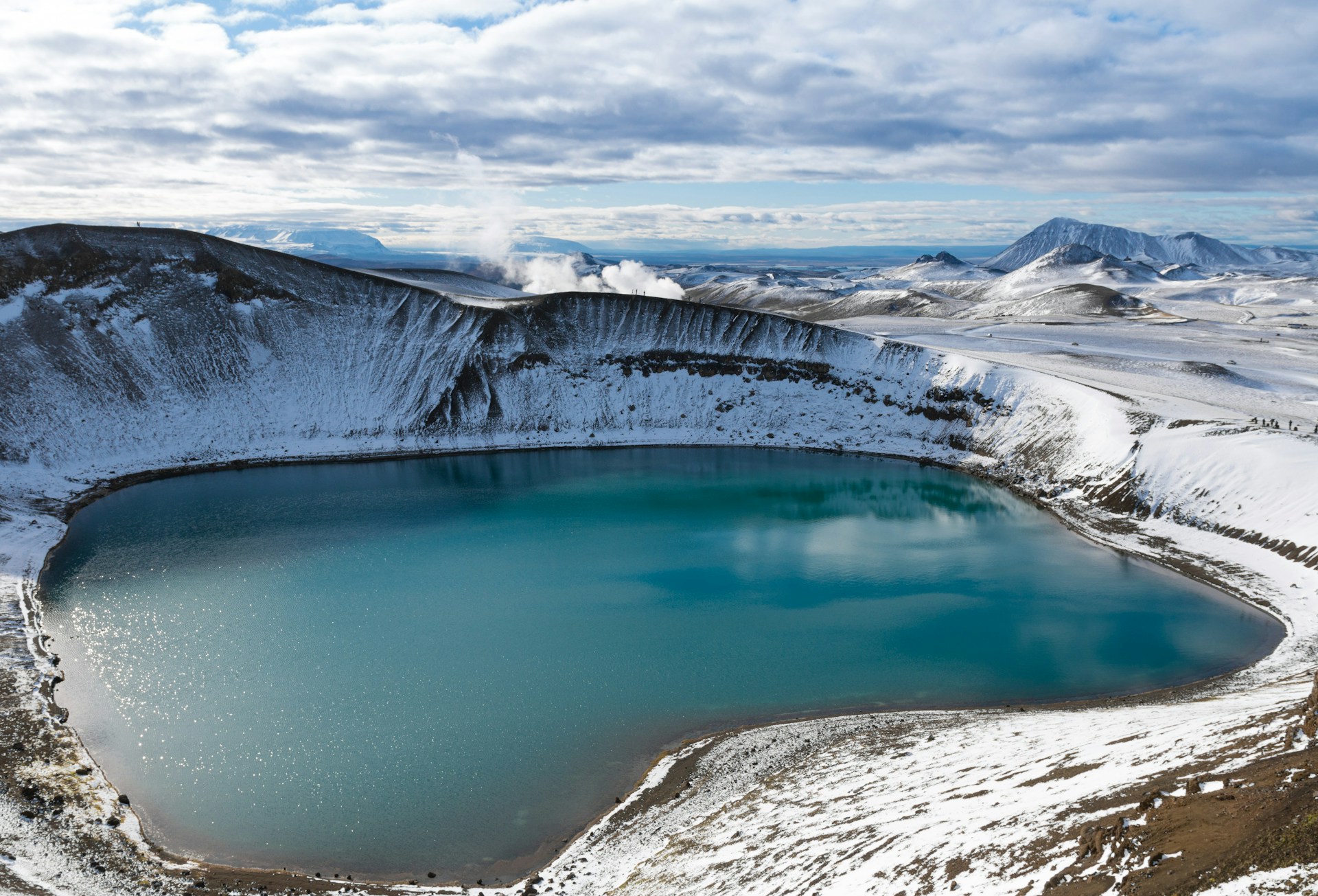Thingvellir National Park is a popular tourist destination due to its unique landscapes and historical significance. Visitors can explore the lava fields, go hiking or camping, and see the Parliament buildings. Many adventure activities in the area also can be sought out here. Located about 50 kilometers (30 miles) east of Reykjavik, the country’s capital.
The park was established in 1930 and it covers an area of about 105 square kilometers. Thingvellir is where the Parliament of Iceland was founded in 930 AD, making it the world's oldest parliamentary institution still in use. The Althing met at Thingvellir until 1798, making it one of history's longest-running parliamentary institutions.
Thingvellir is a UNESCO World Heritage Site.

Its dramatic landscapes, including Lake Thingvallavatn, the largest lake in Iceland, and the Almannagja gorge, which is part of the Mid-Atlantic Ridge. Home to a number of interesting geological features, including the Silfra Fissure, a rift valley that separates the North American and Eurasian tectonic plates. Thingvellir is unique in that it sits on two separate tectonic plates. The North American plate and the Eurasian plate are steadily drifting apart, resulting in some remarkable geological phenomena. It's a magnificent sight to see the plates split open in Thingvellir.
The park is open all year round, but it is most popular in the summer months. There are a number of hiking trails in the park, as well as facilities for camping, swimming and other adventure activities.
Yes, you can dive at Silfra in Thingvellir.

This place is rich of incredible natural beauty, and its underwater world is no less impressive. The clarity of the water and the stunning vistas make Silfra one of the most popular diving destinations in Iceland. If you're looking for an unforgettable diving experience, don't miss when visiting here.
When planning a dive trip to Thingvellir, it is important to choose a reputable and experienced dive operator who knows the area well and can provide you with all the information you need to have a safe and enjoyable dive. Diving into the water without appropriate local experts or equipment is highly advised against. The dangers and risk factors really must be taken serious by all travelers.
Hiking the National Park area
There are just a few of the things that you can see when hiking around Thingvellir National Park. Whether you’re interested in the landscape, the wildlife, or the views, there’s something for everyone in this beautiful place. Visitors can expect to see steep cliffs, waterfalls, and miles of hiking trails. The valley is also home to several historical sites, including the Althingi Parliament Building and the church of Thingvellir. Hiking through the Thingvellir valley is a great way to experience the natural beauty of Iceland's landscape.There are two parking areas that provide overlooking balcony looking points, and walking paths that take you thought. Visitors to the park can walk through the rift valley that marks the separation between the North American and Eurasian tectonic plates.

Rich dark history of the Viking age
The Drowning Pool is a natural pool that is located in Thingvellir National Park. It got its name because there have been many drownings in it over the years. The first recorded drowning was in 1692, and there have been at least 33 more since then. The most recent drowning occurred in 2004.
There are several theories about why so many people have drowned in the pool. One theory is that the pool is deep and cold, and that people can't swim well in it. Another theory is that the pool is dangerous because of the strong currents that flow through it. Whatever the reason, the Drowning Pool continues to claim lives year after year.

There is historical signs all throughout the area with detailed information. so for those who decide to explore as a self guide or travel with a local expert tour guided groups. This area is extremely large but can be easily explored if you do not travel off the beaten path locations.
Hidden gem waterfall Öxaráfoss

Exploring the area visitors will discover this incredibly beautiful waterfall. It is situated on the Öxará River, which runs through the park. The waterfall is around 10 meters high and is one of the park's most famous attractions. The waterfall takes its name from the Öxará River, which meaning "Ox River." The river was used to power an ox-powered grain mill, hence the name.
The waterfall is easily accessible from the main road and is one of the most popular tourist attractions in the national park. The Öxaráfoss has a drop of around 15 meters (49 feet) and is located at the edge of the Almannagjá lava field. The lava field was created after the 2010 eruption of the Eyjafjallajökull volcano.

The park is located in a rural area away from city lights, and its dark skies make for great viewing conditions. Plus, the landscape of Thingvellir is simply stunning, making it a perfect backdrop for natural phenomenon. So if you're looking for an amazing Northern Lights experience, Thingvellir should definitely be on your list! If you are in visiting during the summer season you will truly all that this national park has to offer.




